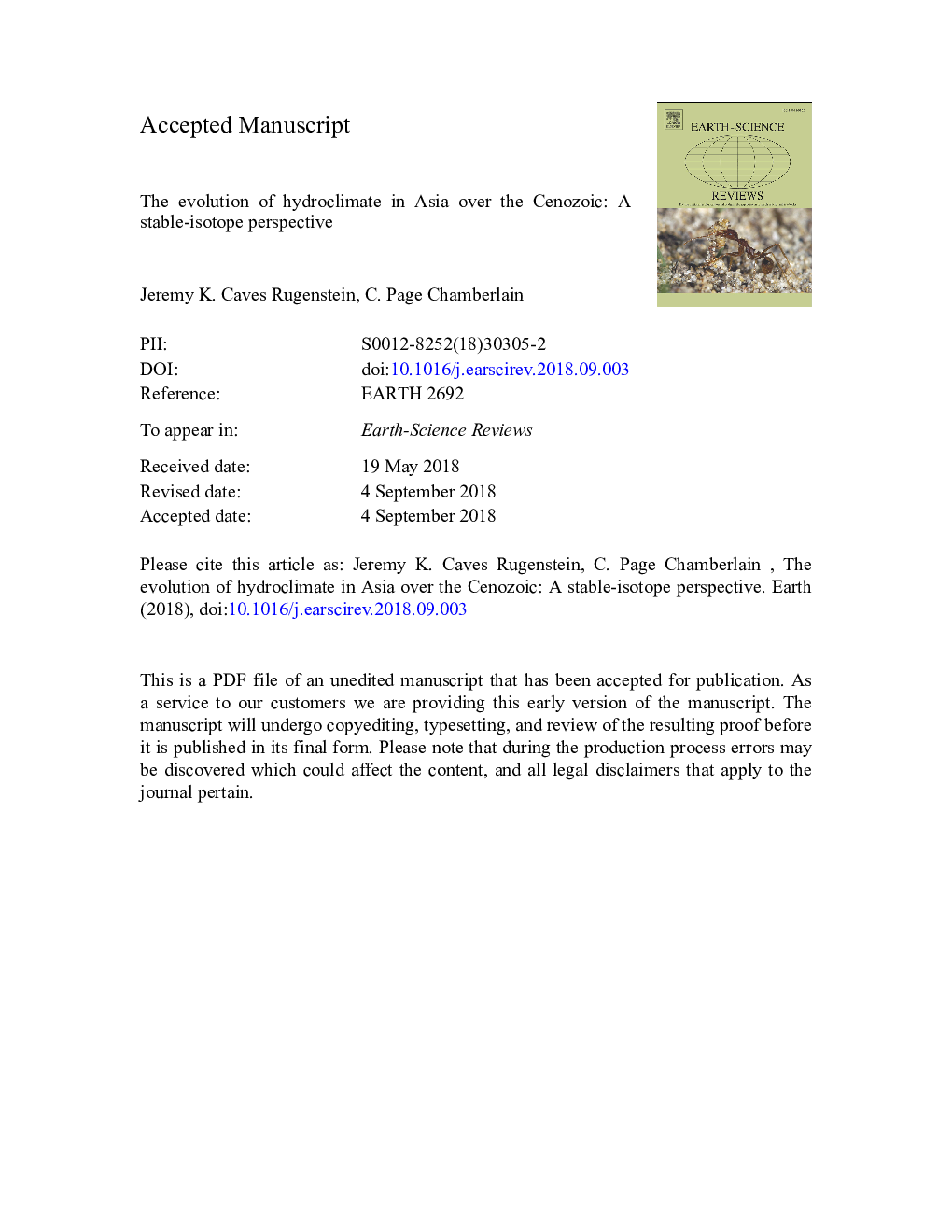| کد مقاله | کد نشریه | سال انتشار | مقاله انگلیسی | نسخه تمام متن |
|---|---|---|---|---|
| 11033065 | 1639918 | 2018 | 88 صفحه PDF | دانلود رایگان |
عنوان انگلیسی مقاله ISI
The evolution of hydroclimate in Asia over the Cenozoic: A stable-isotope perspective
ترجمه فارسی عنوان
تکامل هیدروکلیم در آسیا بر روی سنوزوئیک: دیدگاه پایدار ایزوتوپ
دانلود مقاله + سفارش ترجمه
دانلود مقاله ISI انگلیسی
رایگان برای ایرانیان
کلمات کلیدی
موضوعات مرتبط
مهندسی و علوم پایه
علوم زمین و سیارات
زمین شناسی
چکیده انگلیسی
The δ18O data indicate that atmospheric circulation has remained similar to today for at least 55 million years. Southern Tibet has always received southerly, likely monsoonal moisture, and this southerly moisture has likely rarely extended northward of the central Tibetan Plateau. In contrast, northern Tibet and Central Asia have received moisture dominantly via the mid-latitude westerlies, which have maintained a semi-arid to arid climate in Central Asia since the early Eocene. Thus, the spatial extent of large-scale atmospheric circulation appears largely unperturbed by contemporaneous changes in India-Asia collisional tectonics, extent of the Paratethys, and in global climate. The δ13C data support this interpretation, but yield additional details. Particularly low δ13C across a wide swath of eastern China during the Eocene suggests greater primary productivity due to a strengthened East Asia Monsoon, perhaps driven by high atmospheric pCO2 and globally warm temperatures. Consistently higher δ13C in Central Asia indicates that Central Asia has remained more arid than surrounding regions, such as northern India and southern China, which have received abundant precipitation due to the presence of monsoonal moisture. However, increases in δ13C across much of Central Asia throughout the Cenozoic-including particularly pronounced increases in Mongolia and Kazakhstan during the Neogene-imply that primary productivity has declined across much of Asia. This large-scale “de-greening” is attributable to the combined effects of Cenozoic global cooling and the late Cenozoic uplift of the Tian Shan and Altai mountains, which block westerly moisture. The uplift of these ranges in the late Miocene is supported by decreasing Neogene δ18O in eastern Kazakhstan and sharply increasing δ13C in the lee of the Altai. These regional data demonstrate that the Tian Shan and Altai reached sufficient elevations to interact with the westerly jet by the late Miocene, establishing a substantial rain shadow, and shifting the seasonality of precipitation in western Central Asia. We conclude that paleoclimatic changes during the Cenozoic in Central Asia are more tightly controlled by global climate and by the interaction of the mid-latitude westerlies with the Tian Shan and Altai rather than by changes in the height or extent of the Tibetan Plateau or Paratethys.
ناشر
Database: Elsevier - ScienceDirect (ساینس دایرکت)
Journal: Earth-Science Reviews - Volume 185, October 2018, Pages 1129-1156
Journal: Earth-Science Reviews - Volume 185, October 2018, Pages 1129-1156
نویسندگان
Jeremy K. Caves Rugenstein, C. Page Chamberlain,
